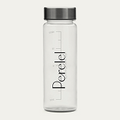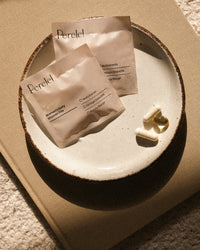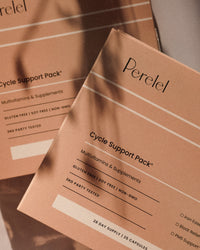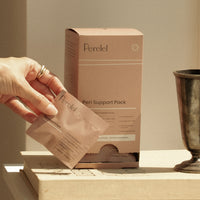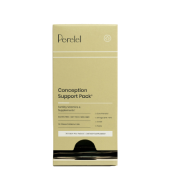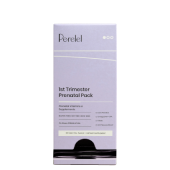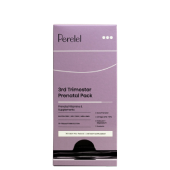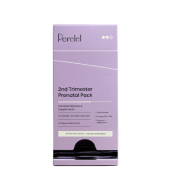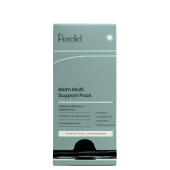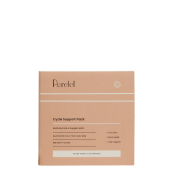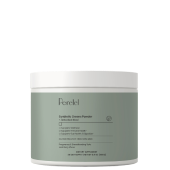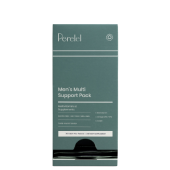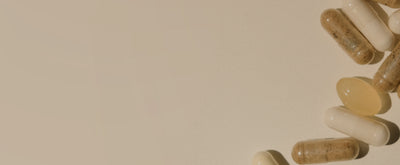There are a lot of factors that go into choosing the right prenatal vitamin: ingredient quality, doctor-backed formulation, and trimester-specific support, to name a few. But the most crucial thing is ensuring that you’re getting the baseline recommended nutrients to support both your health and your baby’s growth—and one of the most important nutrients your prenatal vitamin needs is folate.
Folate plays a critical role in your baby’s early development, from preventing brain and spinal tube defects to supporting cell growth. (And again—it’s crucial for your health, too!) But while you might see folate referred to as “folic acid” on some ingredient lists, it’s important to note that folate and folic acid are not one and the same—and knowing the difference is key to getting the most out of this nutrient.
First things first: What is folate?
Folate (also known as vitamin B9) is a nutrient that plays an important role in red blood cell formation and DNA synthesis. Because of this, it’s especially crucial during early pregnancy—you’ll want to supplement with folate both before and during pregnancy to support healthy early neural, heart and face development.
This is why it’s important to have enough folate before you even get pregnant and during the first trimester—so that during those first few weeks (when you might not even know you’re pregnant) you’re still supporting these key development milestones.1
What are some other benefits of folate?
“Folate is most well known for the prevention of neural tube defects like spina bifida, and other midline birth defects,” adds Dr. Caitlin O’Connor, Naturopathic Doctor and Perelel panelist. That said, it could also support your TTC journey—yet another reason to start supplementing with folate prior to pregnancy.
“There is also evidence that it may help promote optimal fertilization and implantation,” she says. “Anyone planning to get pregnant should take folate for at least three months prior to conception and continue through the postpartum period,” Dr. O’Connor suggests. (These are all crucial reasons why our panel of leading fertility doctors and OB/GYNs opted to include additional folate in our Conception Support Prenatal Pack.)
What is the difference between folate and folic acid?
Simply put, folic acid is the synthetic form of folate—it’s commonly used in supplements and to fortify foods like breakfast cereal, because it’s more heat-stable than its natural counterpart. But there’s one essential caveat with folic acid supplements: Folic acid requires more processing by the body to be utilized, and up to 60 percent of women have a gene variation called MTHFR, which interferes with their ability to properly metabolize folic acid. 2
Meanwhile, folate refers to the very same vitamin—but in its active form, which is more bioavailable.
Which should I choose for my prenatal vitamin?
Look at it this way: With folate’s outsized role in supporting your baby’s early development and the prevention of birth defects, you’ll want to ensure that you’re doing everything you can to properly absorb this nutrient. There are blood tests that you can take to test for the MTHFR gene—the genetic variation that interferes with the absorption of folic acid. Or you could bypass that step altogether by supplementing with the form of folate that’s more easily absorbed by everyone—even those with the genetic variation. It’s why when formulating our prenatal vitamins, our doctors insisted on utilizing 5-methyltetrahydrofolate, or 5-MTHF—an active form of folate that’s more bioavailable.
$49.95
$49.95
$49.95
Shop the Article:

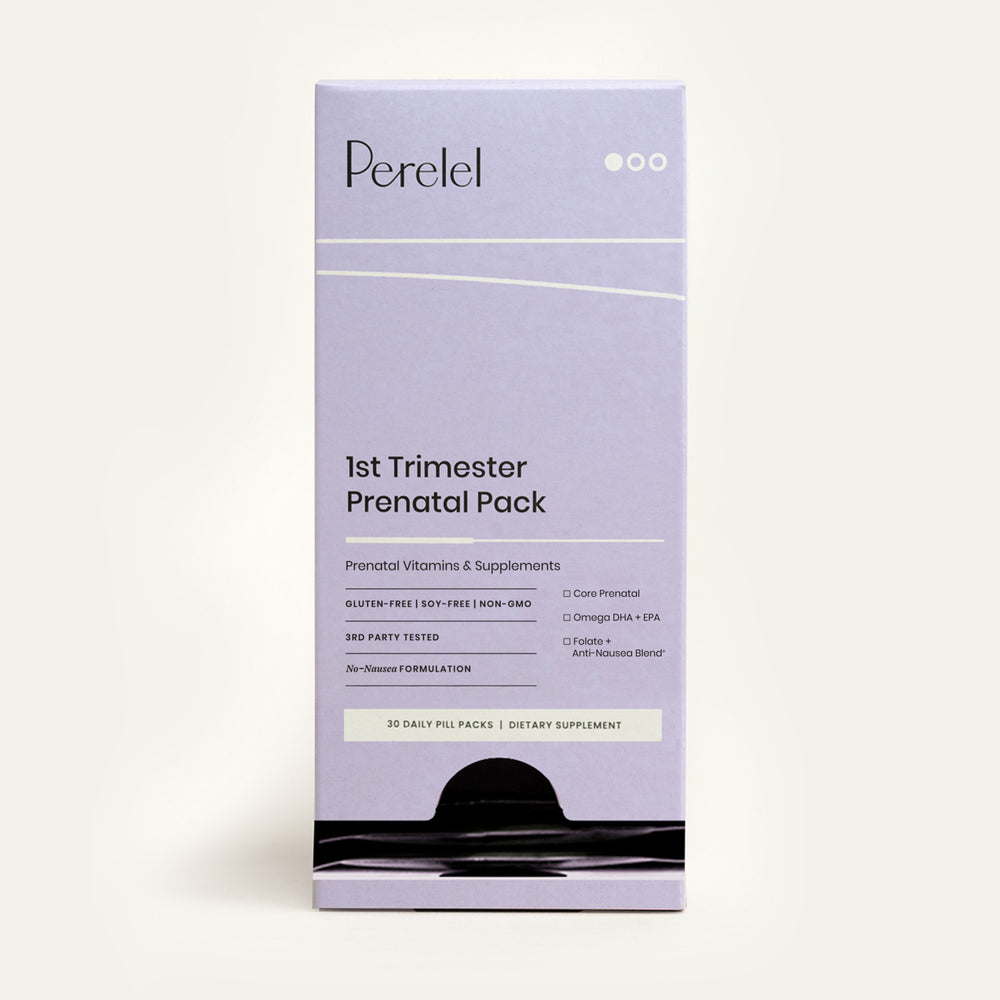
1st Trimester Prenatal Pack
/ Month
Shop Now


2nd Trimester Prenatal Pack
/ Month
Shop Now

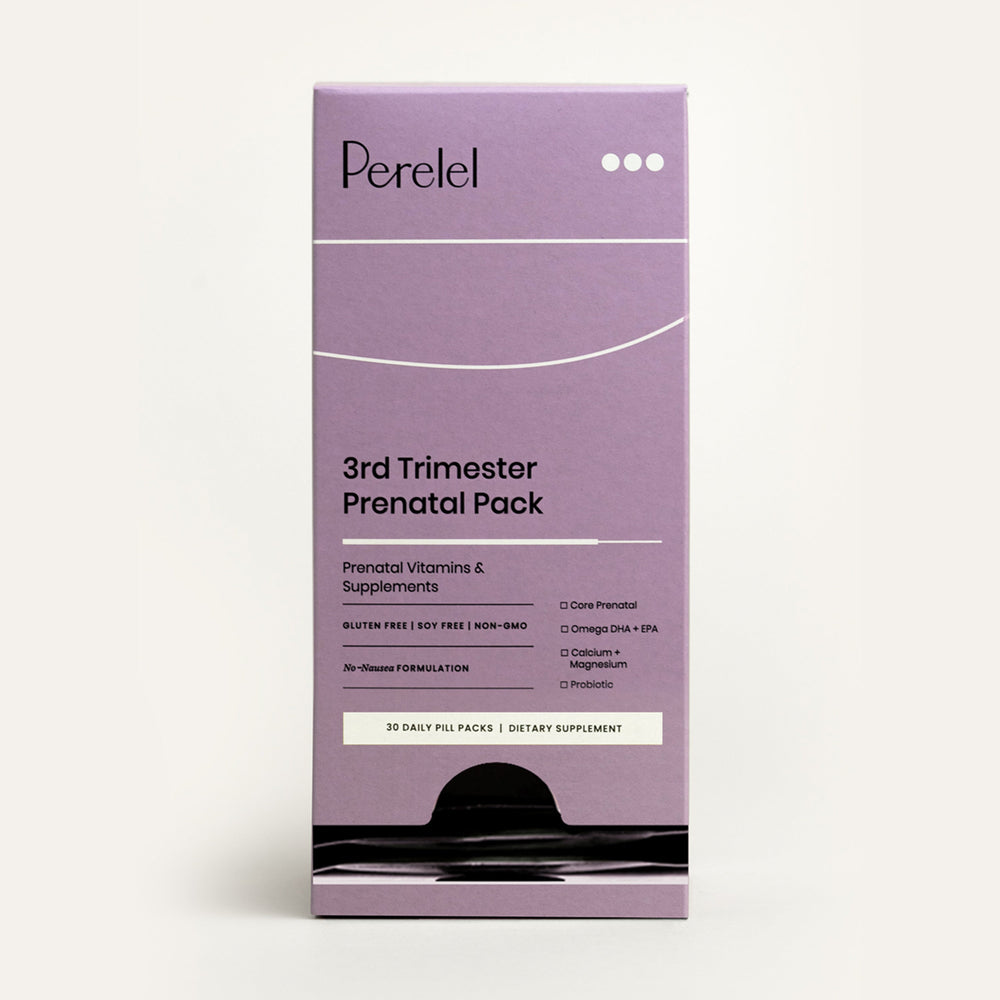
3rd Trimester Prenatal Pack
/ Month
Shop Now
Can I find folate in food?
Dietary folate can be found in foods like citrus fruits, leafy greens, bananas, melons, and walnuts, along with folic acid-fortified foods like breakfast cereal. (We love this recipe for folate-rich pesto spinach turkey burgers.)
That said: “Folate insufficiency is common,” says Dr. O’Connor. According to the CDC, 22 percent of women between the ages of 22 and 49 do not consume enough folate or folic acid to prevent neural tube defects. Another study from the National Institutes of Health (NIH) found that nearly 92 percent of women (and 52 percent of women) were at an elevated risk for folate deficiency.3,4
So while prioritizing a nutrient-rich diet is always a good idea, when it comes to supporting optimal folate levels, supplementing with a multivitamin is important—especially during times when our folate demands are higher, like while trying to conceive or for pregnant women. (It’s also worth noting that folate is a water-soluble vitamin, meaning that we expel it from our bodies when we pee—which is why consistent folate intake is so important.)
For supplementation, Dr. O’Connor notes that the recommended daily amount of folate is 700 mcg. “Although some individuals may benefit from taking up to 4,000 micrograms (mcg), especially if there is a history of neural tube defects,” she says.
It’s precisely why our medical panel formulated our products with methylated folate which, unlike folic acid, is easily converted by the body for absorption. Not only do we use the active form of folate in our Core Prenatal (which you’ll find in our Conception Support Pack and Trimester Packs), but also we add more before conception and during your first trimester when your body needs it most.
What are some signs of folate deficiency?
Fun fact: Iron and folate work closely together to support our red blood cell health—so when we’re deficient in iron or folate, it can cause anemia. Other side effects of folate deficiency include fatigue, appetite changes, indigestion, and irritability.
Consider this your friendly reminder that it’s not just about baby’s health, but yours, too!
Curious how else to adjust your diet in the first trimester? Follow our dietitian-backed guide here.
Resources:
1 U.S. Department of Health and Human Services. (n.d.). Office of dietary supplements - folate. NIH Office of Dietary Supplements.
2 Pi T, Liang YQ, Xia HY, Liu YQ, You LN, Zhu Z, Wang L, Gu X, Jin XF. Prevalence of the methylenetetrahydrofolate reductase 677C>T polymorphism in the pregnant women of Yunnan Province, China. Medicine (Baltimore). 2020 Nov 6;99(45):e22771. doi: 10.1097/MD.0000000000022771. PMID: 33157923; PMCID: PMC7647581.
3 Herter-Aeberli, I., Wehrli, N., Bärlocher, K., Andersson, M., & Sych, J. (2020). Inadequate Status and Low Awareness of Folate in Switzerland-A Call to Strengthen Public Health Measures to Ensure Sufficient Intakes. Nutrients, 12(12), 3729. https://doi.org/10.3390/nu12123729
4 Centers for Disease Control and Prevention. (2009, November 17). NCHS pressroom - 1999 fact sheet - folate and B12 vary by race and ethnicity. Centers for Disease Control and Prevention.
This article is for informational purposes only. It is not, nor is it intended to be, a substitute for professional medical advice, diagnosis, or treatment and we recommend that you always consult with your healthcare provider. To the extent that this article features the advice of physicians or medical practitioners, the views expressed are the views of the cited expert and do not necessarily represent the views of Perelel.
